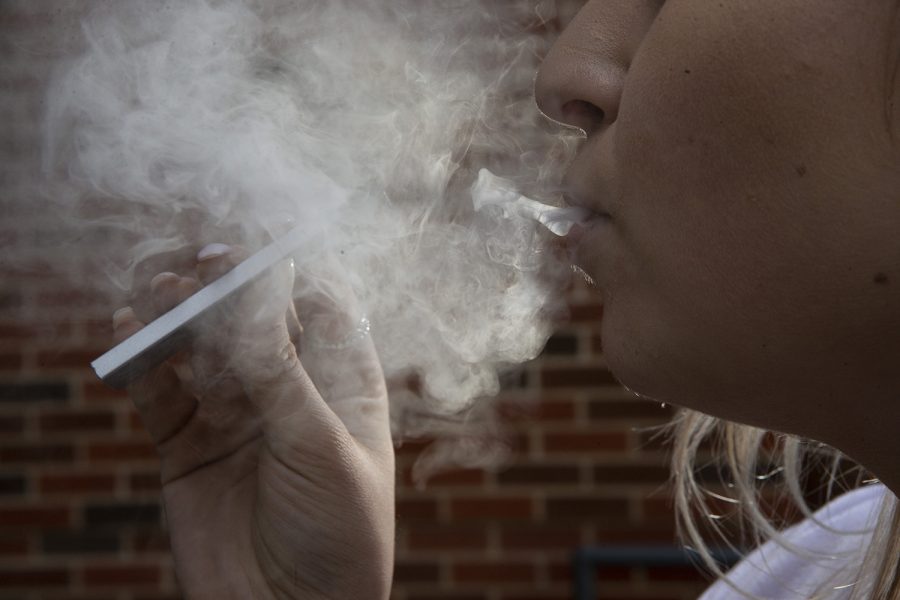Opinion: The vape ban is a smokescreen for the real issue
The problem of third-party cartridges with bad additives isn’t solved by banning flavored e-cigarettes.
Photo Illustration by Katie Goodale
September 22, 2019
After the news of the recent deaths linked directly to vaping, there has been a massive outcry for something to be done. Banning all flavored cartridges is a legislative proposal born from this outcry, but it would not solve the underlying issues that are causing severe illness in both children and adults.
In recent years vaping has become a massive business, and teenagers have been key customers. According to the Centers for Disease Control and Prevention, more than one in four high schoolers report using a tobacco product in the past 30 days, with the vast majority of tobacco products being electronic cigarettes.
One way to combat these rising numbers would be to ban flavored cartridges. A similar ban was instituted against flavored tobacco products under the 2009 Tobacco Control Act to combat growing rates of child tobacco use, which would certainly help reduce those rates now. But that should not be the only course of action taken.
Flavored cartridges are a scapegoat for two much larger issues with vaping: the absurd amount of nicotine in vape pods as well as the contaminants and additives thrown in.
Regarding nicotine levels, vaping exposes the body to far more nicotine than normal cigarettes. A single Juul pod contains approximately one cigarette pack’s worth of nicotine in it. Even if flavored cartridges were banned, teenagers would still vape and there would be an unhealthy exposure to nicotine.
The other massive issue is miscellaneous additives to vape juice. Vaping is not solely used for nicotine — it can also be used for THC, a chemical compound found in cannabis. Recently, there has been a massive surge in third-party copycat retailers selling THC vape pods.
What these retailers will do is take the base compound they have and mix it with “cutting agents” and sell the finished product as pure, according to the Washington Post.
Most media coverage about vaping is about flavored cartridges and kids. After the ban, lawmakers would be able to say, “We did something.” The vaping industry will respond, “You did something, so there’s no more reason to regulate us more.” But the issue will remain unresolved.
Simply banning flavored cartridges won’t stop people from obtaining them. Whether it’s from overseas stores, back-alley dealers, or do-it-yourself videos on the internet, people who want flavored cartridges will find a way to get the items. A flat ban on these cartridges would only be a Band-Aid on a wound that, once covered, will no longer receive the attention it needs to really solve the problem.
If we want the issues with vaping brought to light and resolved in the best manner possible, we cannot simply demonize vaping and what we don’t understand. We need to give the CDC and other medical authorities the time and resources necessary to research every facet this matter.
Prohibition didn’t stop alcohol, and illegality doesn’t stop the drug trade. It won’t stop vaping either. It will take more understanding, nuance, and time to figure out what the U.S. really needs to do to regulate vaping.





